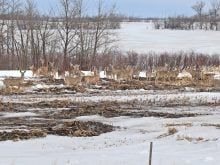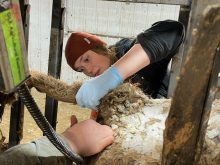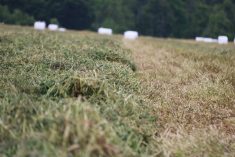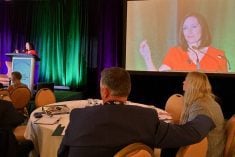GRANUM, Alta. – A chinook that raised temperatures to 16 C and ate mounds of snow overnight was a welcome site for Duncan and Cecilie Fleming as they hosted their tenth annual bull test station field day.
For more than 350 people who stopped by the Granum station, about 70 kilometres northwest of Lethbridge, the greasy mud and yellow rivulets of water were downright pleasant after months of bitter cold.
The field day gave visitors a chance to see what unforgiving weather might do to the variety of yearling bulls placed on test at the Fleming bull development centre.
Read Also
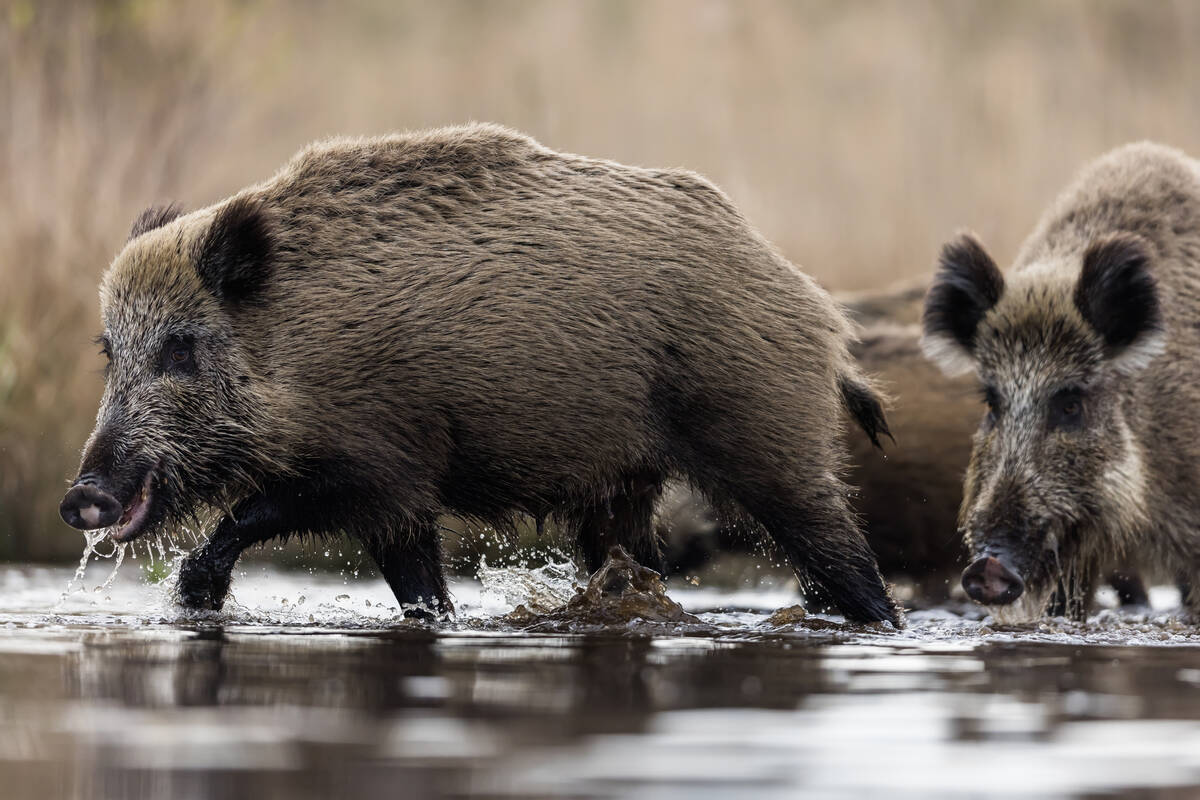
Manitoba bans wild boar possession
Manitoba has tightened the regulatory status of Eurasian wild boar in an effort to help fight back against invasive wild pigs.
For Salers breeders Randy Mader and Reg Baldwin of Carstairs, Alta., the results were pleasing. Their 10 yearlings, the first Salers to go on test at the Granum station, performed well and gained an average of 3.14 pounds per day.
A family-run operation, the bull station serves cattle producers in the area. So far, they haven’t been disappointed.
“Seedstock producers are becoming more selective of the cattle they are sending, so the end product is better,” said Cecilie.
The bulls arrive in October where they go on a two-week warm-up period. Then they are placed on a balanced feed ration, monitored for daily weight gains and compared to the rest of the 350 animals in the test.
The bulls are not pushed or made overly fat. The Flemings prefer to develop them for soundness and the ability to work in normal range conditions.
New varieties
The variety of breeds has expanded and shifted over the years. The station features not only Hereford, Charolais, Angus, Simmental and Shorthorn, but also for the first time, 10 Salers and a couple Wagyus. The Flemings also tested a Simmental crossed with Red Angus and have found a client who favors crossbred bulls.
At the end of the test in March, some bulls go back to work at home while others are sold at a multi-breed sale in Fort Macleod, Alta.
Potential buyers come to the field day to window shop for yearling bulls prior to sale day. Most of them know what they’re looking for, said Duncan.
“They’re getting better educated about what they want for their program. Margins are so tight they want big calves in the fall.
“They can make more money off an 800 pound calf than a 400 pounder,” he said.
Last year the annual sale held at Fort Macleod averaged $2,250 on 132 bulls.




